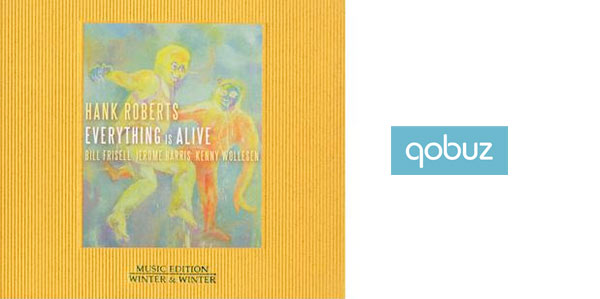Qobuz: Part II
According to Yves Riesel, one of the co-founders of Qobuz, my distressing assessment of the high-resolution demonstration tracks they provided when I opened an account is at least partially due to the fact that I’m “a bit jealous” of their success. Rather than take this as an opportunity to examine the basics of what is and what isn’t a high-resolution audio file, he chose to skirt the issue, call my post “malicious” and pushed the problem back on the wonderful producers that supply their content to the Qobuz site. I’m not bothered by his reaction. It would have been better to open a door toward more information and clarity (which is what a number of their readers expressed in additional comments) but that’s not likely to happen.
I told you that I would complete my discussion of the second track provided free through Qobuz today. Let me quote Stefan Winter of the label Winter & Winter:
“I am not interested in telling a journalist or any other person the secrets of my recording procedure. So I will limit myself to the following:
The recording session with Hank Roberts was made without any digital processing, digital reverb, without any digital effects and live-to-analog-two-track-half inch-virgin-analog-tape in 30 fps without Dolby or any other systems like that. I only use hand-selected microphones. For example, the best tube microphones available on the market for Hank Roberts’ cello. The 24 bit digital master was made with a special atomic clock and special analog-to-digital converters directly after the head of the analog recording machines in real time falling on the recording procedure. This is the Fine Art of Recording. If you want, you can put this information on the web.”
First a couple of thoughts. I’m not a journalist…I’ve spent 40 years as a recording engineer. Yes, I’ve chosen to write a daily blog over the past year, but I’m much more similar to him than he knows. I’ve been a recording engineer and teacher of audio engineering for many decades and never have I considered what I do as “secret”. I’m happy to share how I do what I do and why. Isn’t that the way people learn and how the recording industry improves. So I was a little surprised to hear Stefan put up a wall of secrecy with regards to his techniques. The second thing that is apparent from his response is that he (like Cookie Marenco) is a fan of analog tape recording. This explains a lot.
I’m completely on board with their purist approach to recording without any artificial digital reverb or processing. Kudos to Winter & Winter Records. And wonderful recordings can be made using half-inch, two-track analog tape machines without any type of noise reduction. I would be doing the same thing if high-resolution digital equipment and converters hadn’t come along. But they did. As a result, it is possible to eclipse the frequency response, signal to noise ratio and a whole lot of other problems associated with analog tape. Obviously, some people choose to use analog tape because of the sound that it produces.
NOTE: Just the other day I received a mailer from National Audio Company introducing themselves as a distributor of ATR Magnetics, a company that specializes in producing analog tape. Their mailer includes the following statement: “Professional tape recording provides the most lifelike reproduction”. They’re not alone in believing that myth. I was interested to read that National Audio Company is the “world’s largest cassette duplicator”…I didn’t realize anyone was still using cassette tapes. I learned something new.
So making an analog master (obviously a very good one) is a perfectly acceptable choice. Whereas Cookie then mixes in analog and outputs to a DSD master, the Winter & Winter people converted their analog tape to 192 kHz/24-bit PCM digital. The spectragram clearly shows that there are a couple of tones in the ultrasonic frequency band and the increasing hiss above 60 kHz. None of this stuff is going to diminish the fidelity of their recording. But a 96 kHz/24-bit bit bucket would have done a great job too. I would even say that a CD would be sufficient, but it’s worth going an octave higher.
My reason for evaluating the demonstration tracks from Qobuz was not to cast aspersions on their site or diminish the skills of the producers that supply content to them. It was simply to point out that without some sort of standardization or common definitions, consumers of high-resolution audio are suffering. My hope is that through education and awareness, the pressure will build on high-resolution digital music download sites to accept that a full accounting of the tools and techniques will only help this business.
If the producers had supplied the information in the their responses to Qobuz before I pointed out the lack of high-resolution status…I wouldn’t have bothered to wonder what had happened. We all would have known.


An additional comment on Qobuz practice versus guarantee can be found here:
http://www.stereo.net.au/forums/index.php?/topic/61765-hi-rez-is-it-really-hi-resolution/?p=1050631
Please note: The mailer you received did not introduce National Audio as the owner of ATR. We are strictly a dealer for ATR Magnetics. Please check your mailer and correct the article. ATR is still making the tape and going strong! We (National Audio Company) are simply a distributor.